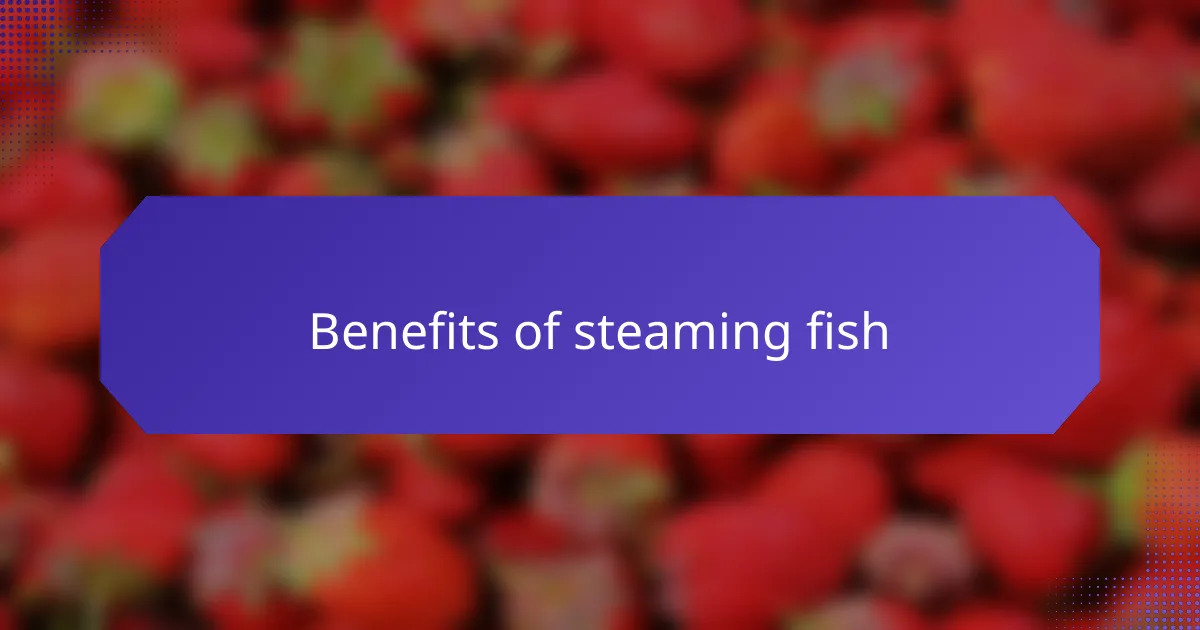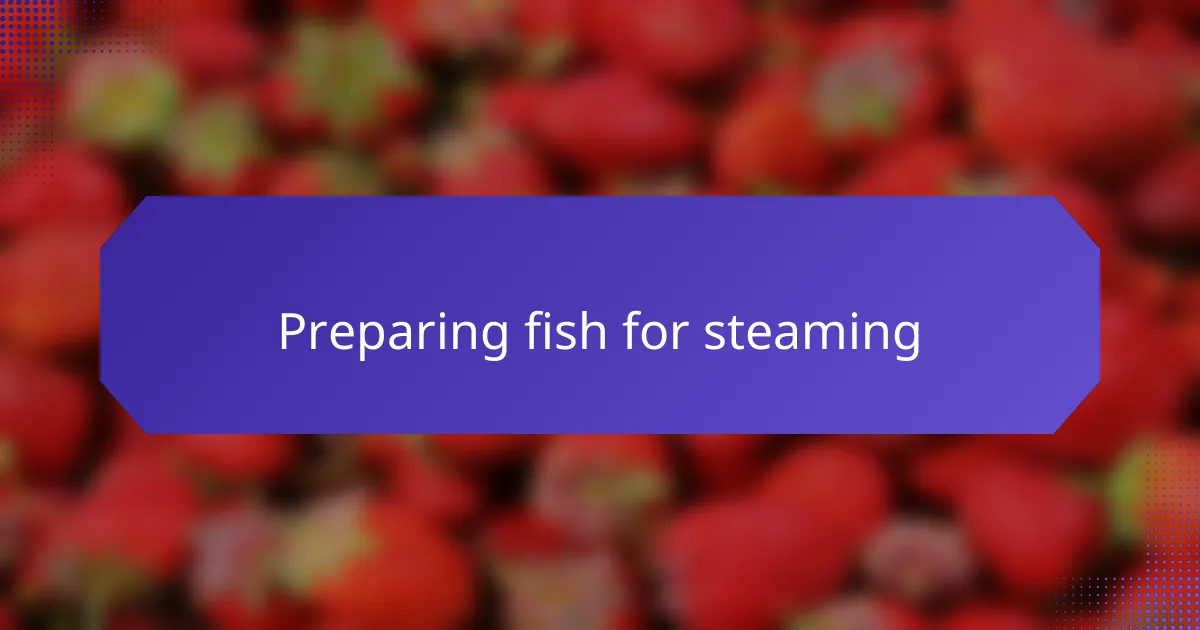Key takeaways
- Cooking challenges help enhance culinary skills and encourage experimentation with new techniques like steaming fish.
- Steaming fish preserves its natural flavors, moisture, and is a healthy, low-fat cooking method compared to frying or grilling.
- Choosing fresh fish with firm texture is crucial for successful steaming; popular options include salmon, tilapia, cod, and snapper.
- The T-fal steamer features multiple baskets, adjustable times, and safety functions that simplify the cooking process and enhance the experience.

Cooking challenge recipes overview
Cooking challenge recipes can elevate your culinary skills while adding an element of fun to meal preparation. I remember when I first attempted a cooking challenge—I was nervous but excited to step outside my comfort zone. It’s a great way to experiment with new techniques, like using a T-Fal steamer for perfectly steamed fish, which can be both healthy and delicious.
In these challenges, I often find myself learning new flavors and cooking styles that I might not have considered otherwise. The idea is to embrace the process, enjoy what you’re doing, and celebrate each small victory in the kitchen.
Here’s a quick comparison table to help you understand the benefits of steaming fish versus other cooking methods:
| Cooking Method | Benefits |
|---|---|
| Steaming | Preserves moisture, enhances flavor, healthier |
| Boiling | Quick, easy, but can leach out flavor |
| Grilling | Adds smoky flavor, requires more attention |

Benefits of steaming fish
Steaming fish offers a wealth of benefits that go beyond just easy cooking. From my experience, it preserves the delicate flavors and moisture of the fish, ensuring a tender bite every time. Additionally, because steaming utilizes water, you avoid adding unhealthy fats, making it a fantastic option for a heart-healthy meal.
I’ve found that with steaming, you can really appreciate the natural taste of the fish, something that’s often lost in frying or grilling. Plus, it’s practically foolproof! I love how easy it is to throw in some herbs or lemon slices, adding a burst of flavor without complicating the process.
Here’s a quick comparison of some cooking methods for fish:
| Cooking Method | Benefits |
|---|---|
| Steaming | Preserves moisture, enhances natural flavors, low-fat cooking |
| Frying | Adds unhealthy fats, can mask fish flavor, higher calories |
| Grilling | Can dry out fish, adds smoky flavor, requires careful attention |

Choosing the right fish
When it comes to choosing the right fish for steaming, I’ve learned that freshness is key. I often visit my local fish market to see what’s available. The vibrant colors and fresh ocean aroma immediately draw me in. I tend to gravitate toward fillets that are firm and smell like the sea—not overly fishy, which is a telltale sign of age.
I’ve had great success with a variety of fish, but here are my top picks to consider for your steaming adventure:
- Salmon: Rich in omega-3 fatty acids and has a buttery texture.
- Tilapia: Mild flavor and tender flesh, perfect for seasoning.
- Cod: Flaky and white, it holds up beautifully in steam.
- Snapper: Slightly sweet with a delicate texture, ideal for a flavor boost.
- Tuna: For those who enjoy a meatier fish; a great option when marinated.
Choosing the right fish can elevate your steaming game to a whole new level, trust me on that!

T-fal steamer features
When I first started using my T-fal steamer, I was genuinely impressed by its user-friendly design. The clear water reservoir allows for easy monitoring, so I can see just how much water is left at a glance. This is especially helpful during longer cooking times, and I can’t tell you how many times I’ve been rescued from a near-dry disaster by simply peeking in!
Here are some key features of the T-fal steamer that I find incredibly useful:
- Multiple stackable baskets for cooking different foods simultaneously
- Transparent containers that let you keep an eye on cooking progress
- Adjustable steaming times for precise control
- Automatic shut-off feature for safety and peace of mind
- Compact design for easy storage, perfect for my small kitchen
These features truly enhance my cooking experience, making it feel more of a joyful task rather than a chore. I look forward to trying new recipes every time I pull it out!

Preparing fish for steaming
Preparing fish for steaming is an essential step that can greatly influence the dish’s overall flavor and texture. I remember the first time I prepared fish—I was nervous about the potential for a dry fillet. However, I learned that seasoning and marinating the fish just right can make all the difference.
To get started effectively, consider the following steps for preparation:
- Choose fresh fish fillets; look for clear eyes and bright skin.
- Gently rinse the fish under cold water and pat it dry with paper towels.
- Season with salt, pepper, and your choice of herbs, like dill or parsley, to enhance the natural flavor.
- Optionally marinate it for 15–30 minutes with citrus juice or soy sauce for added depth.
- Slice lemon or ginger to place on top or beneath the fish for an aromatic touch.

Step-by-step steaming process
When it comes to steaming fish in my T-fal steamer, I always ensure I have everything organized before I start. First, I prepare the fish by seasoning it lightly with salt, pepper, and maybe a bit of lemon juice or herbs for added flavor. I’ve found that letting the fish marinate for about 15 minutes enhances the taste, making each bite more delightful.
Next, I fill the T-fal steamer’s water reservoir with fresh water, ensuring that it’s enough to last for the duration of cooking. I place the seasoned fish on the steaming tray and set the timer according to the fish type—usually around 10 to 15 minutes works well for fillets. I remember the first time I used this method, the aroma filled my kitchen, and the result was a perfectly tender fish that practically melted in my mouth.
Here’s a quick comparison of different steaming times for various fish types I often use:
| Fish Type | Steaming Time (minutes) |
|---|---|
| Salmon Fillet | 10-12 |
| White Fish (like Cod) | 8-10 |
| Trout | 10 |
| Shrimp | 4-6 |


